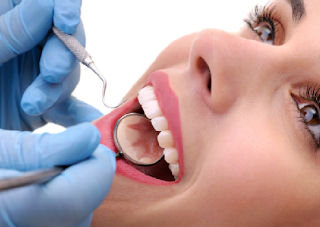Oral Diseases and Health
Oral diseases not only affect mouth to
mouth area, but impact in various parts of the human body, so it is important
to have good hygiene to ensure the elimination of bacteria.
For
people, it is very important to have a healthy white smile, but when not properly
care for infections can appear uncomfortable. In here you will familiar with the
most common diseases of oral health.
Oral
Caries:
A
crack in the teeth is caused by food acids decaying. It affects more than 90%
of the world population.Regularly
recorded on the outside, but if not treated in time, can affect the nerve,
causing severe pain and loss of tooth. The poor oral hygiene and sugary
food intake favor its appearance.
Oral
Gingivitis:
Gingivitis
is generated by improper brushing, poor flossing and smoking involves the
inflammation of the gums caused by an infection (bacteria) or the accumulation
of plaque and tartar. If not attended to in time, can affect the bone and
become a periodontitis.
Its
symptoms include bleeding, swelling, redness, sensitivity to cold and bad
breath.
Periodontists:
Periodontists is a progressive infection of the gums and bone loss around the teeth, which
causes the release of teeth.
Most
cases result from prolonged accumulation of plaque and calculus on teeth. Its
main symptoms are intense redness of the gums, pain and inflammation without
eating or light bleeding during brushing.
Oral
Cancer:
When
there is no proper cleaning, your mouth can harbor many germs and bacteria that
cause this type of oral disease. It manifests from any sores,
inflammation or ulceration last long.
Some
risk factors that trigger the disease are: smoking, alcohol, diet deficient in
vitamins A, E, C and iron, a viral infection or excessive sun exposure.
Halitosis:
Poor
oral hygiene, tooth decay and smoking are the causes of bad breath in
adults. It is important to visit the dentist to make a diagnosis and prescribe
appropriate treatment.
Experts
Recommendation:
Oral experts recommend avoiding sweets
and sugary drinks, eating a balanced diet, brush twice a day with quality tooth
brush and tooth paste in proper ways, flossing and regular visits to the dentist for a check-up.










 9:12 PM
9:12 PM
 Jimmy Frenendo
Jimmy Frenendo









